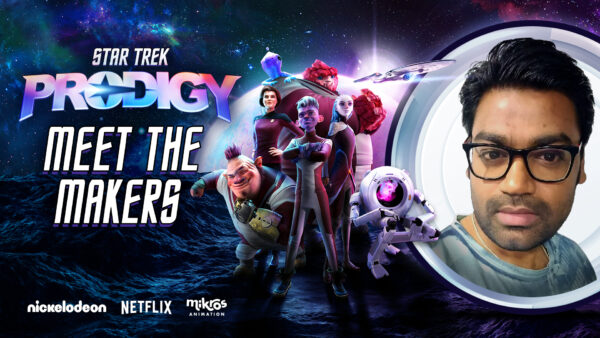
Get an exclusive behind-the-scenes look at Star Trek: Prodigy with our Meet The Makers series. Today, we’re excited to introduce Joseph Anthony Raj, Modelling Senior Supervisor at Mikros Animation. Dive into the fascinating world of 3D creation and animation, and learn how Joseph and his team brought the characters and environments of this iconic series to life. Don’t miss this captivating interview where he shares the challenges, successes, and cutting-edge technologies used to transport Star Trek fans to new interstellar adventures.
- Were you already familiar with the Star Trek universe before you started work on the series?
When I was 12 years old, I first heard about Star Trek. We used to watch the series on a black-and-white TV at our neighbor’s house. That was my initial introduction to the characters and the show, and ever since then, I have been a huge fan.

- What did you find different about season 2?
The design and artwork have advanced to a higher level, with Season 2 featuring more intricate locations. Season 2 is notably more complex than Season 1.
- Can you talk about the creative process behind the animation of “Star Trek: Prodigy”?
Creating assets for Star Trek consistently presents challenges, and thanks to collaboration with the NICK team, we successfully completed them. The Nickelodeon team’s assistance was invaluable throughout the creation process.
- What were the biggest technical challenges you faced for both seasons of the series?
Creating detailed environments is a significant challenge in Star Trek, and managing the intricate models is a major undertaking. Starting in Maya, transitioning to ZBRUSH, and then returning to Maya involves technical complexities that must be addressed in this project. We have all enjoyed and learned a great deal from working on this project.

- How did you approach the design of the settings and environments to faithfully reflect the aesthetic of the Star Trek universe while bringing a unique touch to “Prodigy”?
Upon receiving the design, we convened as a team to strategize and ensure its successful execution with consistent quality. Primarily, we used ZBrush for sculpting 90% of the assets.
- Can you share details about the technology and software you used?
Maya was used alongside ZBrush for intricate sculpting, while Marvelous Designer was employed for creating lifelike clothing, enabling us to achieve a superior level of detail in our work.
- Which characters, scenes, or sequences are you most proud of in “Star Trek: Prodigy”?
Each character in the show has a unique design and attitude in their animated portrayal. I particularly enjoyed the individual character designs, which is why I liked all of them.

- How did your team manage visual and narrative continuity across different seasons and episodes?
Nickelodeon and Mikros collaborated to assist us at every stage, providing guidance to help us achieve our goals. They broke down each daunting task, simplifying it for better understanding, and successfully completed the challenging project. Additionally, they occasionally provided us with blocking and scale files, which greatly aided in initiating the asset-building process.
- What lessons or insights did you gain from working on this project that you plan to apply to your future projects?
The primary focus was on acquiring skills in managing high-level complex projects, as well as planning, executing, and leading a team in a work-from-home setting. This was our first project in a remote work environment, which presented significant challenges in coordination and completion.





